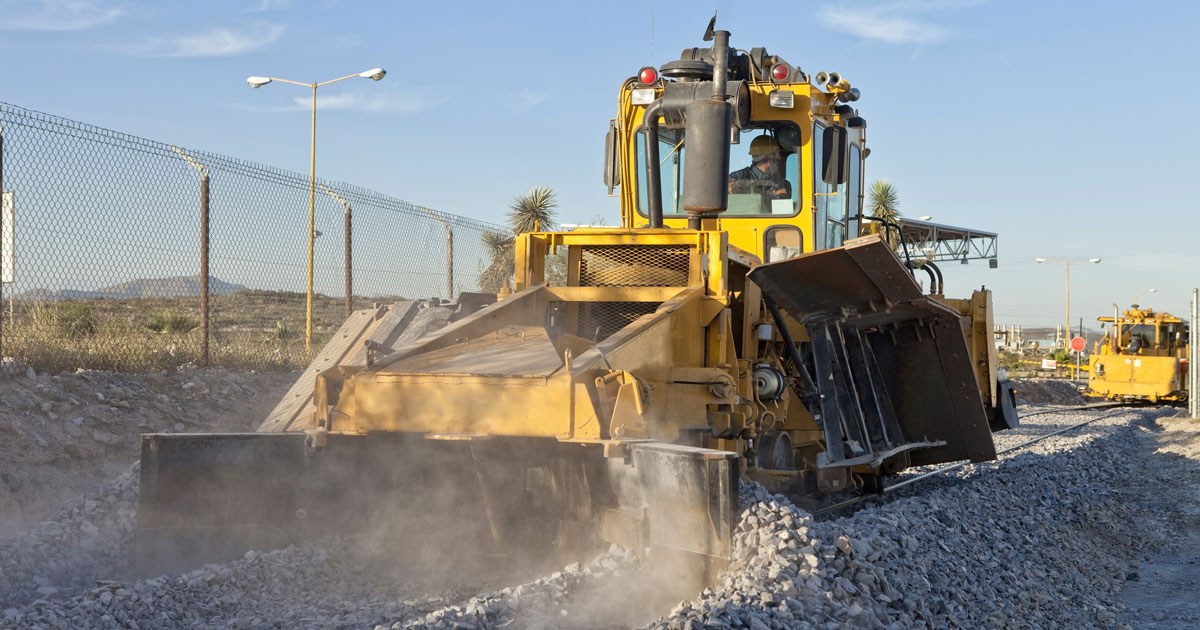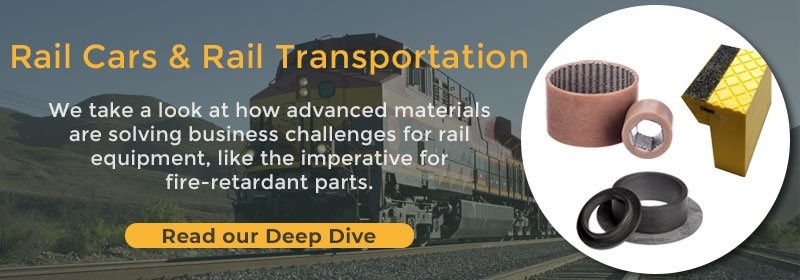
In this article, we take a look at some key types of locomotive, rail car, and maintenance of way equipment.
Rail Locomotives
The locomotive (or “engine”) is the rail vehicle that provides power for each train. Some modern passenger train designs do employ “self-propelled” cars which can be powered without an engine, but this arrangement is relatively rare.
At a high-level, locomotives are typically classified based on how they generate power. For example:
- Steam locomotives were the first type of mechanized locomotive (early experimental trains were horse-drawn or pulled by stationary cable systems). While they remained the most common type of engine until well into the post-war period, they are less efficient than modern alternatives and have been phased out except on history-minded “heritage railways.”
- Diesel-electric locomotives use a diesel engine, but this engine does not drive a mechanical mechanism directly. Instead, it powers an electric generator which is subsequently used to power the motor.
- Electric locomotives are powered by electricity alone, which means they need some sort of external power supply. This supply can take the form of an overhead line suspended from poles above the track or an electrified “third rail” running along the track itself.
We traditionally imagine locomotives pulling from the front of a train, but today’s locomotives are often used in a “push-pull” manner, where the engine can be at the front, back, or both of the train. Heavy freight trains may even utilize a “distributed power” arrangement where a supplementary locomotive is placed in the middle of the train and remote-controlled by the leading locomotive.
Rail Cars
This list highlights the breadth of specialized cargoes that rail cars are tasked with handling. Even a simple boxcar comes with a large degree of mechanical complexity, including coupling systems, braking systems, undercarriage trucks, and more. All of these systems must be engineered to stand up to high levels of vibration, varied weather conditions, and more. Meanwhile, rail OEM’s and operators are experimenting with more and more advanced technologies, this article provides a great exploration:
Types of Freight Cars: Key Examples
- Boxcars are the most common type of freight car and can carry a huge variety of pallet-borne cargo inside.
- Refrigerated boxcars are essential for transporting perishable foods.
- Automobile rack cars for transporting automotive vehicles. These racks can be single- or multi-level. Some even include adjustable-height racks for accommodating larger vehicles without changing rail cars.
- Flatcars offer more room than boxcars and can be flexibly loaded. They are suitable so long as the carried cargo can be exposed to weather. Common goods shipped include intermodal containers, steel beams, heavy machinery, and pipe.
- Centerbeam cars (a specialized flatcar) allow for bundled goods that can be packed up along both sides of a central beam, providing a strong center of gravity. Lumber or wallboard are examples of the types of goods shipped on these cars.
- Hopper cars come in covered and uncovered varieties. Used to transport dry bulk commodities like grain, they can be loaded from the top and unloaded from the bottom.
- Tank cars for shipping liquid products like oil or chemicals. These cars often need extra safety features to, for instance, prevent sparks and limit fire risk.
Passenger Cars
Passenger rail systems range from larger long-distance Amtrak trains to small local trolleys and commuter/light rail systems. In general, these cars employ more complex safety systems than freight. For example, mechanical brakes are replaced with electro-mechanical braking systems.
While the basic function of these cars is the same, higher-speed trains require more robust safety systems, while smaller trains need lighter-weight cars. Some trains include cars with specialized interiors, like sleeping cars, dining cars, and observation cars, which come with their own equipment needs.
Maintenance of Way Equipment
Rail locomotives and cars are only one small part of the arsenal of equipment needed to maintain rail infrastructure. Tracks cover many miles of varied terrain and need to be kept level, solidly founded on well-packed ballast (the crushed stone used as a bed under the track itself), and free from debris.
Successfully performing these maintenance tasks requires specialized equipment like:
- Ballast cleaners, a machine for removing dirt and other contaminants from the ballast. Cleaning ballast helps prevent the need to constantly replace it with new crushed stone.
- Under cutters, a special heavy-duty machine for actually removing the ballast under tracks to facilitate more in-depth maintenance and cleaning.
- Rail grinders are a vehicle that grinds down rails to preserve level rails, remove deformations, and smooth out corrosion. Regular grinding allowing for longer intervals between rail-replacement.
- Tampers are used to pack ballast as tightly as possible, which helps to keep ballast level, tightly packed to absorb impact, and effective at preventing foliage from growing under the tracks.
- Rubber boards & walkways, having a clean and well-maintained pathway on and off of transits are essential to efficient operations.
Learning More
- You can read more about the current state of play for the rail industry here.
- We take a look at some recent rail transportation trends here.
TriStar is proud to work with rail equipment manufacturers across all the categories discussed above. We bring an engineering-driven approach to the table, helping clients solve key design pain points for their rail designs. You’ll find our self-lubricating materials everywhere from maintenance of way equipment to on the station platforms of the largest subway system in the country.
In the in-depth article linked below, we take a look at why bearings and similar components are so important for rail equipment.
Or, just use the button below to reach out directly to our team and discuss how we can help your rail equipment perform more efficiently and more safely.










